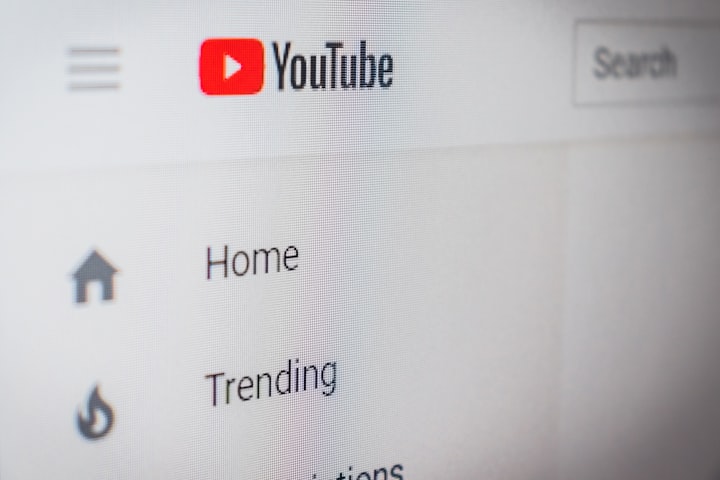The Ultimate Guide to Ranking Your YouTube Videos on the First Page of Google
If you want to increase the visibility of your YouTube videos and drive more traffic to your channel, it's important to optimize your videos for search engines.

Ranking your YouTube videos on the first page of Google can be a challenging task, but with the right strategies and techniques, it's definitely achievable. Here's the ultimate guide to ranking your YouTube videos on the first page of Google:
If you want to increase the visibility of your YouTube videos and drive more traffic to your channel, it's important to optimize your videos for search engines.
Ranking your YouTube videos on the first page of Google can be a challenging task, but with the right strategies and techniques, it's definitely achievable. Here's the ultimate guide to ranking your YouTube videos on the first page of Google:
Conduct keyword research: Keyword research is the process of identifying the words and phrases that people are using to search for content related to your niche. By understanding what your target audience is searching for, you can tailor your video titles, descriptions, and tags to include these keywords and increase the chances of your videos showing up in search results.
To conduct keyword research, you can use tools like Google's Keyword Planner or Ahrefs to find relevant keywords with high search volume. You can also use the "Related searches" feature on YouTube to see what other keywords are commonly searched alongside your target keywords.
Optimize your titles and descriptions: Your video titles and descriptions are the first thing that viewers see when they come across your videos in search results, so it's important to make them as compelling and informative as possible.
Use your target keywords in your titles and descriptions, but be sure to use them naturally and in a way that makes sense. Avoid keyword stuffing, as this can actually hurt your rankings. In your descriptions, include a clear, concise call-to-action that tells viewers what you want them to do (e.g., "watch the full video," "subscribe to our channel," etc.).
Use tags wisely: YouTube allows you to tag your videos with relevant keywords to help them show up in search results.
When choosing tags for your videos, be sure to include both broad and specific tags. Broad tags, like "fitness" or "travel," will help your videos show up in a wider range of search results, while specific tags, like "weight loss tips" or "budget travel hacks," will help your videos show up in more targeted search results. Avoid using irrelevant or spammy tags, as these can actually harm your rankings.
Encourage engagement: The more engagement your videos receive, the more likely they are to rank higher in search results. YouTube's algorithm takes into account a variety of engagement metrics, including likes, comments, shares, and watch time, when determining the ranking of a video.
To encourage engagement, ask your viewers to like, comment, and share your videos, and respond to comments in a timely manner. You can also promote your videos on social media and other platforms to drive more views and engagement.
Collaborate with other creators: Collaborating with other creators in your niche can help increase the visibility of your videos and drive more traffic to your channel.
When you collaborate with other creators, you can cross-promote each other's content, which can lead to more views and subscribers for both parties. To find collaboration opportunities, you can reach out to other creators in your niche through YouTube's community tab, social media, or forums.
https://sites.google.com/view/socialmediagrowthseo/home
Use video transcripts: Adding a transcript to your videos can help improve their search rankings and make them more accessible to viewers.
Video transcripts allow Google to index the content of your videos and understand the topic and context. To create a transcript, you can use a transcription service or do it manually by transcribing the audio of your video. You can then add the transcript to your video's description or use a tool like 3Play Media to automatically sync the transcript with the video.
Optimize your channel and playlist titles: In addition to optimizing individual videos, it's also important to optimize your channel and playlist titles for search. Use relevant keywords in your channel and playlist titles to make it easier for viewers to find your content.
Use video sitemaps: A video sitemap is a special type of XML sitemap that tells search engines about the videos on your website or YouTube channel. By creating and
submitting a video sitemap, you can help search engines discover and index your videos more efficiently. To create a video sitemap, you can use a tool like XML-Sitemaps.com or the Video Sitemap Generator by SEOBook.
Once you have created your video sitemap, you can submit it to Google through the Google Search Console. By following these strategies and techniques, you can improve the ranking of your YouTube videos on the first page of Google and drive more traffic to your channel. Just remember to focus on creating high-quality, engaging content that resonates with your audience, and your videos will naturally attract more views and subscribers.
https://sites.google.com/view/socialmediagrowthseo/home





Comments
There are no comments for this story
Be the first to respond and start the conversation.